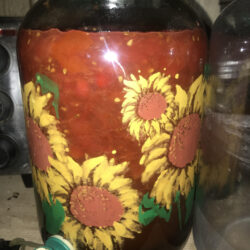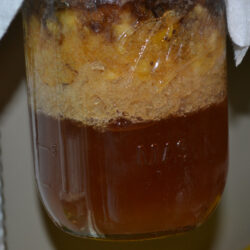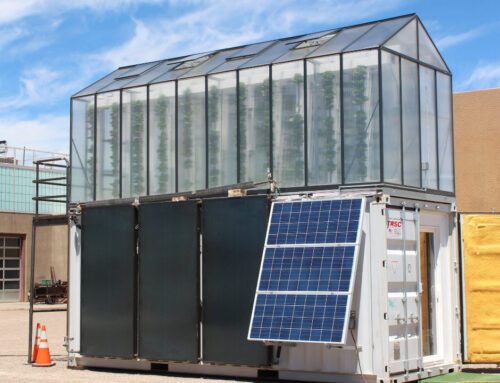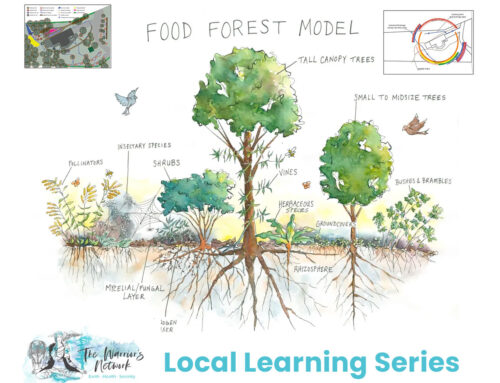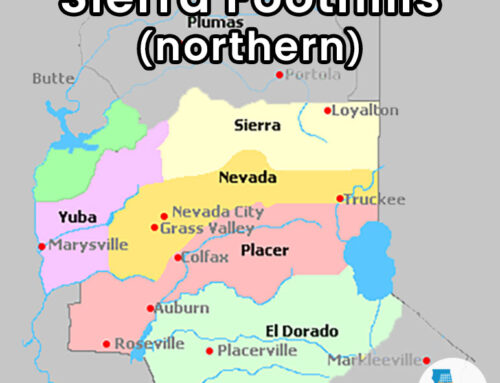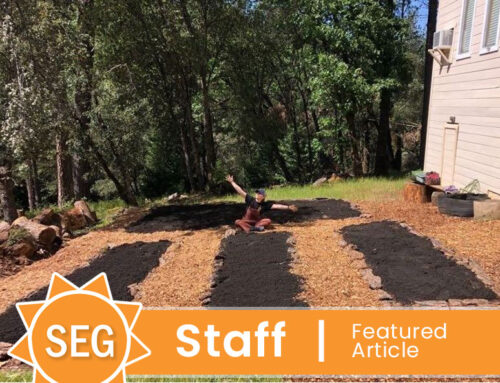This article was written by guest-author Kenneth Scherer, founder of KOrganics, based in North San Juan, CA.
Creating Life In Your Soil With Fermentation
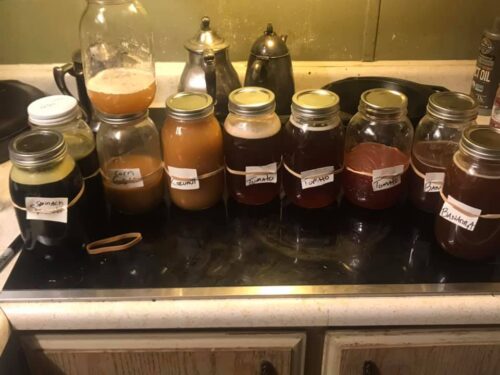



Various Fermented Juices
Now that you have your bio char, what can be done with it? In an article written by C.Tabor of the Biocharcoalition.org, it was discussed why it’s important, and the many ways to procure this valuable mineral. I will be discussing various methods and practices involving what can and cannot be done with your biochar, regarding soil fertility, and the concept of adding increased mycology to the soil, for all kinds of growth and remediation applications.
One of the best usages for char in the garden is to inoculate it. To inoculate bio char, the easiest ways are to utilize waste streams such as compost, manure, leaf mold or fermented mediums.
The goal is to assist in adding life by generating the building blocks required for increased long–term storage of plant nutrients, utilizing carbon to increase root systems.
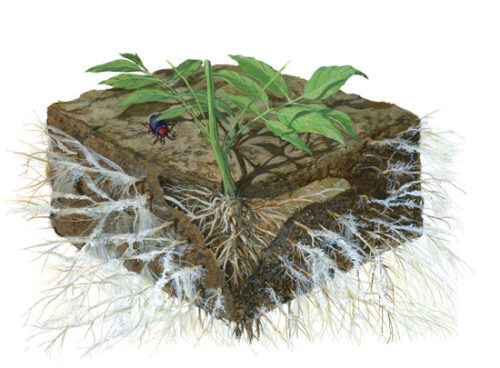


Mycelium underworld
Anybody anywhere can begin this practice with something as simple as throwing a rotten banana on top of biochar, or letting it soak in compost teas or placing it in compost. As decomposition occurs due to bacteria and fungi, it will release compounds to then be incorporated into the char. Utilizing food scrapes or organic residues with biochar, over a period, will lock in nutrients to then be used later. Since biochar, created at a high pyrolysis temperature, is pure empty space with a negative charge structure, nutrients, bacteria and fungi will occupy these spaces depending on their PH, anions and cations.
Anions and cations in plants, oh my! But why do we care?
By utilizing water which has two hydrogen (+) and one oxygen (-) we can then incorporate nutrients into the biochar. Therefore, fermenting materials in H2O, can extract compounds to then be delivered into the char that roots will surround. It’s important to inoculate biochar if you wish to add this mineral by direct burial. If one does not, you can experience wilt once transplanting into newly established garden beds, as it will be competing for nutrients to fill the carbon motel. Once filled, bio char is ready to work.
The best time to apply biochar was yesterday. If you missed your chance, today can be that day. Certain areas that are drought stricken should be adding as much as they can. The USDA recommends 1-10 tons per acre, or at least 1 ½ inch layer, scattered on the surface. There are many experiments going on right now to find the best application ratios biased on climate. Some of these studies are looking to control erosion and water flows.
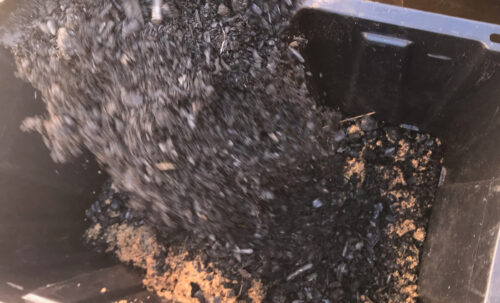


Adding biochar to fermented base
–
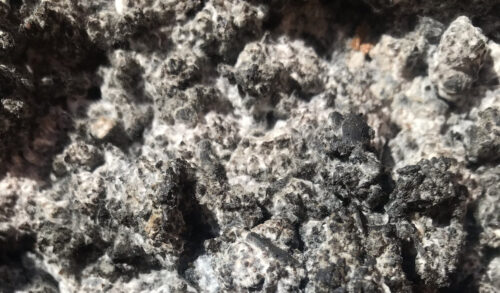


2 days after adding biochar to fermented base; Mycelium
At KOrganics, we apply this knowledge to generate ultra-potent mediums, that will then soak into the char. Our building blocks involve organic inputs such as bug frass, microbial concentrates, fermented materials and mineral spring water. We have studied synergistic effects that increase bioactivity of our raw ingredients, utilizing fermented juices such as tomato for its chitin degrading compounds.
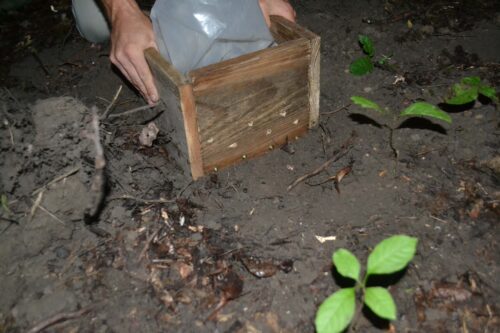


IMO BOX (Indigenous Microorganisms) for local microbial collection
–
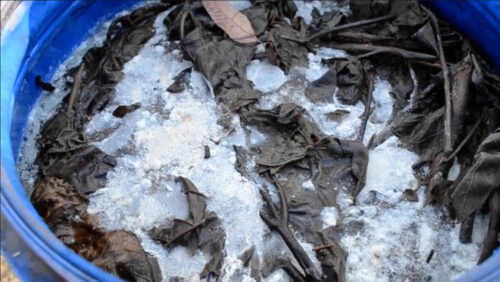


Paulownia Leaf Fermenting in liquid
This insures the best possible outcome for nutrient density, storage capacities, as well as pathogenic scrubbing mycology via anaerobic bacteria, such as lactobacillus. By using anthropoids in fermentation with chitinoclastic compounds, we can build our soil to feed the rhizosphere, and generate mycelium to assist in nutrient exchange rates, increased mycology, and water retention abilities.
What is Bug Frass?!
Demonstration of Bug frass fermentation blend microbiology
MAKE YOUR OWN!
How to make your own Lactobacillus
(college of tropical agriculture and human resources)
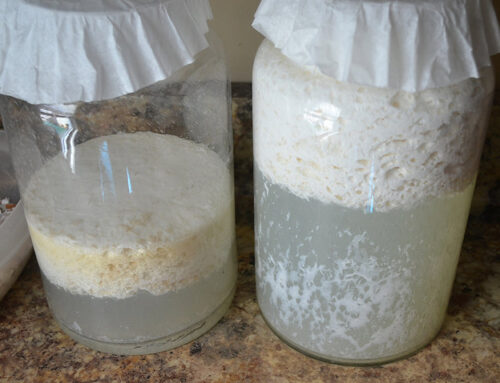


Homemade Lactobacillus Culture
How to make Fermented Extracts (FPJ, FFJ, FLJ)
(college of tropical agriculture and human resources)
- Fermented Tomato Extract
- Fermented Banana Extract
Korean Farming Acronym’s
- FPJ – Fermented Plant Juice
- FFJ – Fermented Fruit Juice
- FLJ – Fermented Leaf Juice
- LAB – Lactobacillus
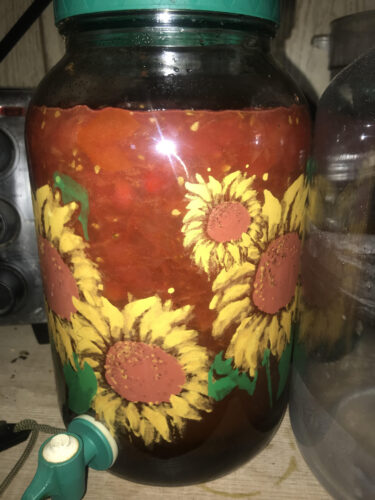


Fermented Tomato Extract
KOrganics Fermented Tomato is quite simple to generate:
- Take 6 Pounds of fresh grown or organic tomatoes.
- Squish in a 5-gallon, food safe plastic bucket, with 27 ounces of brown sugar
- Cover with lid or place into mason jars, or a jar with valve on the bottom usually works best.
- Let sit until complete separation of liquid, and tomato pulp as seen above.
- After 5 or 7 days, strain liquid into mason jar.
Tip: recommence fermentation material into a smaller vessel or throw pulp into compost.
- Add ½ brown sugar when begins to smell acidic, or over saturate the medium with sugar for long term storage. Store in a cool dark place and keep lid semi tight but not completely secured.
Since we are now heading into the spring season and growing is on our minds, it’s important to start adding these mediums into the soil. The steps I conduct are as follows:
- Generate Biochar
- Generate a LAB solution (click link above, takes 5-7 days utilizing rice wash and milk)
- To create a Germination soil blend, Mix 6 OZ of LAB with 1 pound of biochar (preferably fine grain char) and 3 pounds of sterilized soil for the germination mix. TIP: you can also generate a spinach ferment to assist in germination add 6 oz to sterilized soil, SEE FPJ guide above
- When plants are germinating, now is a good time to generate the soil amendment for your garden and for transplants. For measurement’s sake, we will use a 5-gallon bucket in the example below.
How to Create Soil Amendment for your Garden and for transplants.
- Ferment mediums of the ½ cup Tomato Juice Extract, ½ gallon LAB serum, ½ gallon of mineral water, with 1 pound of manure and/or with bug frass, and when using both manures a 50:50. Wait 2-3 days and stir once a day in vortex fashion, without agitation. KEEP A LID ON THE BUCKET
TIP: You can use this first step fermented liquid as a top dress feed through the vegetative cycle. Dilute the mediums during various times of the season progresses. Apply this mix as early as seedlings become strong and established. Our recommendations for dilution throughout the season are
1-4 weeks 1 part of mixture from step one above to : 100 water??
4-8 weeks 1:5
8-16 weeks 1:2
16-20 weeks 1:50
20-24 weeks 1:500
24-28 weeks 1:1000
28-32 weeks – Cease application
- Utilize the biochar you generated and fill the five-gallon bucket with 1/2 volume of biochar.
TIP: Fine grade char works best by increasing its surface area.
- Add fermented liquid to the biochar in the 5 gallon bucket
- Mix Biochar and fermented medium until completely blended, let sit for one to three days, KEEP A LID ON THE BUCKET.
Starting at 3:51
Video: Above is a visual of a similar process, although it’s not exactly in the same order as the steps above it will give you a good idea of what to look for.
- After fermentation of biochar with our 1st fermented medium, you can store in an animal feed style breathable bag. We usually twist the bags and place a rubber band around the twist to keep it tight, since we are storing this medium; but it can be used right away.
- When we are planning on storing the inoculated char, let sit on top of the 5-gallon bucket to capture any juices after twisting the bag, as there will be some moisture that leaks out. This liquid can be diluted at 1:20 Ratio to be used as a top dress feed solution, great for no till.
- If planning on using right after fermentation you can apply to soil by blending immediately.
- We blend our inoculated medium at a 1:10 Ratio for transplant soil in potted or raised beds.
- If using soil beds; build bed, add char at the 1:10 ratio, water soil beds in after construction, and let settle for 1 to 2 weeks, then transplant. You can also top feed the solution if using pulverized char, by soaking the char in more water making a slurry to then be applied to the sides or in-between pre-established plants via top dressing, agitate to suspend during application when using a pulverized wet application technique.
- Continue applying fermented liquids utilizing the ratios below and apply different ferments at different stages of plant development. I usually stop using frass or manure teas when the plant begins to show fruiting flowers as periodic applications of fermented mixtures of manures, and or frass, during vegetative cycles, will be stored and ready in root exudates to perform at optimal rates.
- When flowering and or fruiting begins, switch to bloom stimulating compound teas, such as the banana ferment (listed below w/instructions and application rates), paulownia, apricot, plum, and spinach. You can also generate your own Cal–Mag solution.
- To make cal-mag solution and for application ratios; click here
- Towards the end of the fruiting stage, we halt all applications, and at this point we should have achieved a high brix rating, to obtain plants that resist pests, diseases, and powdery mildew.
TIP: You can generate foliar applications of these mediums which require heavy dilution at 1:1000 ratios, and further steps. You can obtain more of this type of information with a consultation by contacting us through our website or by phone.
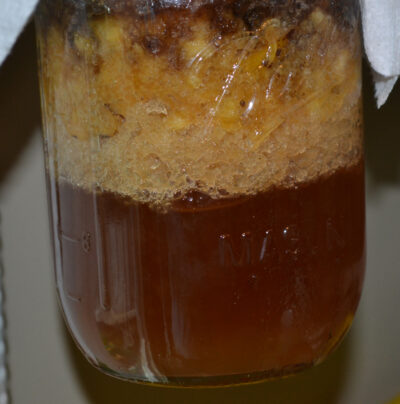


Fermented Banana Extract
KOrganics Fermented Banana Ferment for flowering stage:
- Whole bananas work best, and left-over peels can be used to.
- Gather 7 pounds of whole bananas and/or peels, cut into rounds, or chop peels into squares.
- Mix 1 ½ pound of brown sugar aggressively, in a 5-gallon food safe bucket
- Place mushy bananas into mason jars, leaving 1/3 of space on top for fermentation and separation 5. Screw lid on jars semi-tight
- Wait for liquid and pulp to separate, takes 4 to 7 days
- Use strainer and gather liquid on the bottom, then place into clean mason jars, semi-tighten lids.
Top dress Application FPJ:
1:500 during vegetative states, apply when watering.
1:700 or 1:000 during fruiting season, switch to Banana Ferment, apply during watering.
Top Dress Application Lactobacillus Serum (LAB):
1:50 for depleted or harsh soil, recommended to be used in tandem with biochar.
1:250 dilution for new bed preparation.
1:500 for seedling and transplants.
1:1000 during vegetative states, apply during watering.
1:2500 during fruiting or flowering.
TIP: Liquids should never have a foul smell to them. Fermented plant, fruit, and leaves should smell a bit alcoholic after they have undergone proper fermentation. Always keep ferments at a temperature of 60 to 90 degrees. If hotter, they may ferment to quick in my personal observation. LAB cultures should smell good, like cheese with a semi-sweetness to it. If it smells rank, you can compost the medium and try again.




Various Fermented Juices
TIP : When making fermented plant, leaf or fruit juice, one is not required to add half and half sugar to weight ratio of the material. Utilizing sugar assist’s extraction of chlorophyll and other plant compounds. Use the 50/50 sugar/plant ratio, only if planning on storing for a year or greater. The longer the liquid ferments the more bioactive it becomes. This also applies to the lactobacillus serum.
For instance, Manda, a fermented food company in Japan, generates a 3–year extract that showcase’s this knowledge.
When KOrganics creates FFJ (Fermented Fruit Juice) we add about 20-30% volume of sugar or 30/70 (plant / fruit / leaf) ratio. We then feed our ferments once a month, 5-10% sugar per volume.
For example: 32 oz of liquid ferment will need 1/4 to ½ cup of sugar per feeding.
Committing to this method will generate hungry and scavenging microbes, that work quickly once applied to soil. Sugar is expensive so we want to keep this expense minimal.
When we feed the ferments sugar, it serves as a food source for the microbes living in the liquid, and to slow down the consumption of plant compounds locked within it, which isn’t always a bad thing if it does occur. If medium does turn acidic make sure to dilute 1:1000 before usage. If you want long term storage, it’s best to saturate or utilize a species with a high glucose content. Brown or dark sugars will also produce a humic substance on the bottom from these fermentations, and some utilize molasses, of which I discovered isn’t very cheap and not cost effective for low-cost inputs.
Also, certain ferments such as fruits or plant leaves, already come loaded with glucose, and therefore are not required to add excessive sugars, just a small amount goes a long way! It’s best to research each plant you ferment, to disclose the amount of pre-existing sugar that exists within the leaf, fruit, or plant. Utilizing research journals is an invaluable resource when undertaking these types of processes, or a quick google search. Therefore, KOrganics utilizes the paulownia tree. It contains 23% of its net leaf weight as glucose. 2030% is what we are aiming for. The only other ingredient to begin the fermentation process is water. LOW-COST, high returns.
(Collecting Paulownia Leaves) www.youtube.com/watch?v=2gxiWPmwUPM
Fermentation of other mediums then give us the compounds to then utilize biochar to grow indigenous fungi and bacteria by means of capture. Capturing native species requires a bit of time and patience.
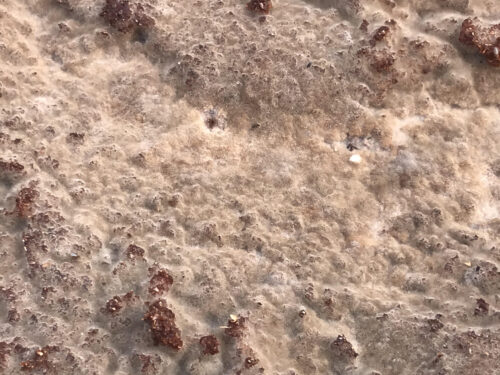


Captured Airborne Yeast, fungi, and bacteria in wheat germ
The air we breathe and the ground we walk, is teaming with biology unique to the area each of us are dwelling within. Sour Dough can be used as an example, and certain mediums that are high in starches and carbohydrates, have an ability to capture these airborne and ground dwelling species, we then incorporate into the bio-char. KOrganics experiments with various methods and techniques from all over the globe.
We have learned that plants and trees growing in our vicinity, are best suited for this type of application via fermentation. At Bobs Biomass in Chowchilla, CA, we primarily utilize green material of the paulownia tree, which in itself is a carbon sequestering powerhouse, packed full of nutrients, proteins, microbes and fats, to load our biochar to amend San Joaquin Valley soil.
How to utilize the paulownia tree for microbial fermentation and various other usages
Another way to apply biochar is to just top dress an area you wish to regenerate or boost carbon values. Simply throwing biochar on the surface of the ground, without tilling, shanking, or ripping, will gradually work its way in the soil at a slow pace, utilizing gravity and natural moisture. Once spread, biochar will begin to inoculate itself just by being apart of the biome it surrounds and store up nutrients, and lock in harmful pollutants. When applied by this manner, the application won’t need to be soaked in a fertilized or fermented mix and will help alleviate soil compaction issues, while enhancing water retainment abilities over time. This type of application can be very effective for heavy machinery that operate in crop production fields.
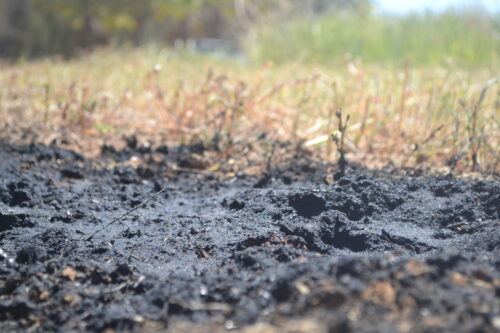


Top dressing biochar works wonders
Our website: KOFrass.com, has accumulated the information regarding these alchemical reactions, and how biochar assists our efforts in this manner. By supplying a permanent home for these compounds, we can enrich the soil medium for decades. We are committed and have generated a warehouse that produces large volumes of bug frass, so others can obtain this biopolymer of great potential. We use this biopolymer because of its high value in chitin. Chitin is a primary budling block for the growth of mycelium, and cellular life. Frass also comes loaded with its own microbiology and nutrient density we unleash into the biochar.
How to Biochar
A lot of what KOrganics does was acquired by studying and practicing JADAM “Korean Natural Farming” resources. Master Cho graciously supplied his knowledge that I highly recommend, to fully comprehend how these practices work, and to begin a journey not many are aware of.
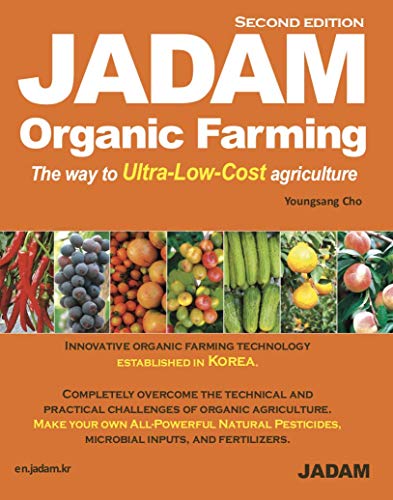


Korean Natural Farming Bible
Soil is an anaerobic environment, that many western farmers see as a bad thing. KOrganics goals are to restore a strong anaerobic culture to assist cleaning pollution, and to restore the hydraulics of our soil cycle. Teaming with life so small, it hardly gets noticed. Living in a disconnected and convenient age, has generated a separation of the basic principles of the seat we occupy. Soil incompetence has generated a state of shock from a lack in knowledge. Many beings comprehend these properties and many more are unaware.
To add life, is to add sustenance by means of nourishment. We must embrace and encourage the soil, wherever our feet connect to the ground. As a species, we can tackle this monumental task, to become sustainable, to build a better future for those to come. During the decades of our agriculture pursuits of the modern age, soil has been mismanaged and misunderstood. The Latin word for soil is solium (“seat, chair; throne”). It is the seat of our existence on earth, and it’s our passion at KOrganics, that drives us to feed soil what it needs.
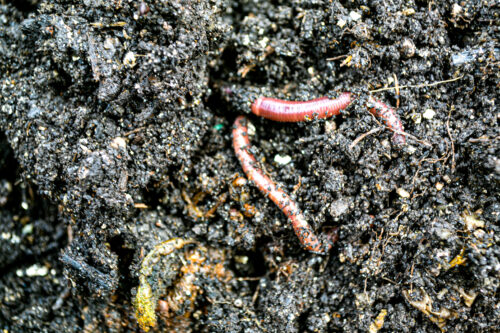


3-year soil building no synthetics
Our company and constituents are open to all forms of communication, especially when it comes to innovation and collaboration. We are easy to reach. If you wish to learn more, please visit our forum. It’s free to sign up and can open discussions, or critique. We invite you to what we are trying to accomplish. Also, feel free to reach us at support@kofrass.com, or give us a call, or visit our YouTube channel. We offer consultations and engage in free public seminars, located in the Nevada City area in California, as well as neighboring communities. We also offer our products via our online store, if you wish to begin your own fermentations, and highly suggest starting your own fermentation projects today. Also, as a member of the biocharcoaliton.org, compels me to continue educating others on the multifaced usages of biochar.
Focusing on a constructive path towards regeneration, our philosophy on plant biology is at the cutting edge of research, development, and sustainability. We understand we all share space and by spreading critical knowledge of how best to incorporate biochar, with or without fermented mediums, is something we want to see grow, like mycelium.
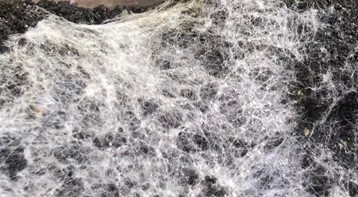


KOrganics Mycelium induced Biochar





